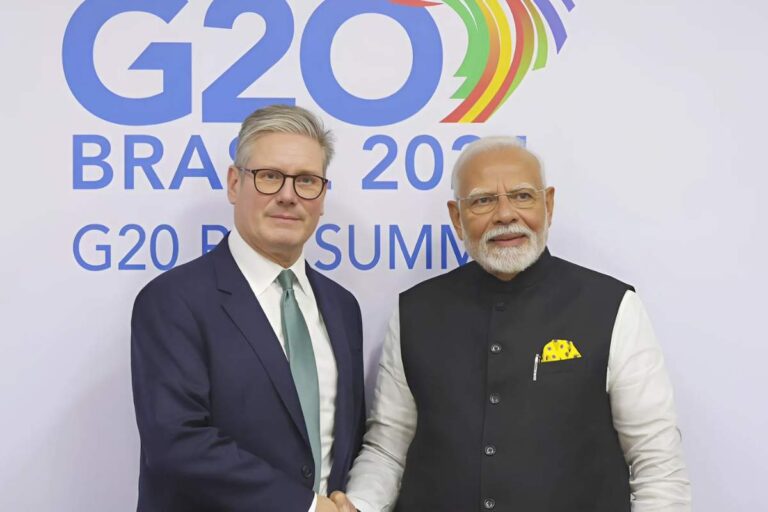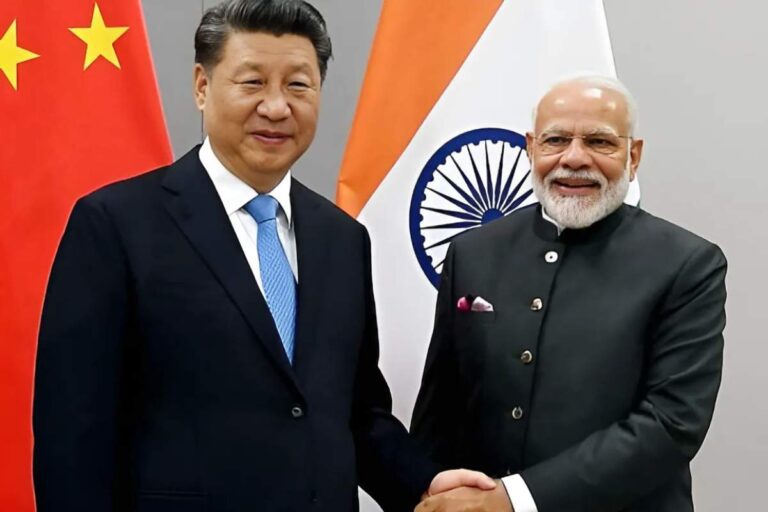Table of Contents
Operation Sindhoor was a rapid and forceful military action undertaken by India after a fatal terrorist strike in Pahalgam on April 22, 2025. Operation Sindhoor was aimed at terrorist infrastructure within Pakistan and PoJK to neutralize the cross-border terror groups. The action occurred rapidly, characterized by stern condemnation, diplomatic measures, military strikes, and global reactions, ending in a ceasefire. This article presents a detailed report of Operation Sindhoor, ranging from the initial terror strike to the eventual ceasefire.
The Pahalgam Terror Attack: A Trigger for Action
1.1 The Horrific Attack in Baisaran Valley
The attack that was the trigger for Operation Sindoor took place on April 22, 2025, in the scenic Baisaran Valley in the vicinity of Pahalgam. Five militants, who were well-armed, ambushed a group of tourists, killing 26 civilians, 25 of whom were Indians and one Nepali national. The savagery of the attack was especially shocking, with reports that the militants identified Hindu men specifically after determining their religious identity, even making some recite Islamic prayers to determine non-Muslims. This terror attack was attributed to The Resistance Front (TRF), an obscure outfit later discovered to be a front for the Pakistan-based Lashkar-e-Taiba (LeT). The very magnitude and the fact that civilians were targeted in a way that called to mind the ghastly 2008 Mumbai attacks, the most lethal terror attack on Indian territory before this one, highlighted the ever-present threat of cross-border terrorism from Pakistan. The attack not only brought huge grief but also ignited countrywide anger and a call for firm action from the Indian government.
1.2 Claim of Responsibility and National Outrage
The Resistance Front (TRF) took responsibility for the Pahalgam attack, which further exacerbated the national outrage across India.
This allegation, subsequently withdrawn in the face of cyber intrusion allegations, was, however, seriously considered by Indian authorities as they cited TRF’s connection to Lashkar-e-Taiba (LeT), which is a known Pakistan-based terror group. The attack was widely condemned throughout India, with demands for a forceful and prompt response to ensure the security and safety of Indian citizens and to prevent future terrorism. The targeting of Hindu pilgrims elicited strong emotions and reinforced the image that Pakistan-supported terrorism was still a real and serious threat to India’s domestic security and communal peace.
Operation Sindoor: India’s Targeted Retaliation
2.1 Precision Strikes on Terrorist Camps
Rising to this egregious provocation, the Indian military launched ‘Operation Sindoor’ at the dawn of May 7, 2025. The operation included a series of precision missile strikes on nine terror camps in Pakistan and Pakistan-occupied Jammu and Kashmir (PoK).
The Indian government made it clear that the operation was “focused, measured, and non-escalatory” and aimed only at dismantling terrorist infrastructure that was being employed for planning and executing attacks on India.
Using sophisticated “precision capability” and “niche technology weapons,” the attacks were carefully designed to minimize any collateral damage, so that only selected buildings or clusters of buildings within the terror camps identified were targeted. The targeted areas included the principal training and logistics centers of infamous terrorist groups like Lashkar-e-Taiba (LeT), Jaish-e-Mohammed (JeM), and Hizbul Mujahideen (HM). Indian authorities claimed that this bold action was undertaken to provide justice to the victims of the Pahalgam attack and to disrupt the terror networks functioning from Pakistani territory.
Interestingly, India deliberately spared any Pakistani military facilities, reflecting a mature approach of de-escalation while firmly responding to the pressing terror threat. This operation was a joint effort by the Indian Army, Navy, and Air Force, carried out based on credible and actionable intelligence.
2.2 India’s Approach: Measured and Non-Escalatory
During the conduct of Operation Sindoor and in its aftermath, the Indian government had a clear message that stressed that its response was measured, non-escalatory, proportionate, and responsible. Briefings by senior officials, including the Foreign Secretary and the armed forces’ representatives, emphasized the accuracy of the strikes and the conscious attempt to steer clear of civilian and military infrastructure in Pakistan.
India claimed that the operation was a direct reaction to the Pahalgam terror attack, which it deemed the original escalation.
While assuring that it would not initiate aggression, India also communicated a strong determination to retaliate effectively against any future attacks or aggression by Pakistan. This communication was intended to emphasize India’s determination to fight terrorism while also communicating its willingness to ensure peace in the region, subject to Pakistan ending support for cross-border terrorism.
Pakistan’s Response: Denial and Retaliation
3.1 Islamabad’s Denunciation and False Allegations
In marked contrast, Pakistan’s initial reaction was one of denial and bluster. Islamabad denied any role in the Pahalgam attack vehemently and decried Operation Sindoor as an “act of war”.
Pakistani authorities asserted that the Indian raids killed 31 civilians, including children and women, and even accused mosques of being targeted.
These allegations, however, were immediately and firmly denied by India, which provided evidence indicating that the dead were indeed terrorists.
Pakistan’s Prime Minister Shehbaz Sharif claimed his nation’s right to retaliate strongly against what he described as an unprovoked Indian aggression. Yet reports indicated that the actual power to decide lay with the military establishment.
3.2 Pakistan’s Military Response and Disinformation Campaign
After the Indian attacks, Pakistan began a cycle of retaliatory military operations, such as carrying out drone attacks and heavy artillery shelling along the Line of Control (LoC) and the International Border. On May 7-8, Pakistan tried to attack various military establishments in North India and Western India with drones and missiles; however, these efforts were duly thwarted by India’s integrated air defense systems. Pakistan also conducted a mass disinformation campaign, falsely claiming to have destroyed India’s strategic assets such as S-400 and BrahMos missile bases, and destroying airfields in Sirsa, Jammu, Pathankot, and elsewhere. While initially indicating a potential for de-escalation if India stopped further attacks, Pakistan was seen redeploying its troops to forward positions, which suggested ongoing offensive intent.
This denial-revenge and disinformation dissemination pattern highlighted Pakistan’s traditional policy of patronizing cross-border terrorism while trying to shift the blame and gain global sympathy.
Military Encounters After Operation Sindoor
4.1 Pakistan’s First Revenge and India’s Reaction
The post-Pahalgam attack and Operation Sindoor period saw a series of intense military encounters between India and Pakistan. The early response of Pakistan on the evening of May 7-8 was in the form of drone and missile attacks against Indian military installations, which were successfully repelled. India hit back by attacking Pakistan’s radar installations and systems of air defense, reportedly knocking out an air defense system in Lahore. Pakistan then initiated heavy artillery bombardment across the LoC, especially in border areas of Jammu and Kashmir, resulting in civilian fatalities.
India’s military continued to repel Pakistan’s efforts to escalate, such as intercepting many drones and missiles targeting Indian cities.
4.2 Destruction of Military Infrastructure
Indian Army Colonel Sofiya Qureshi reported that Pakistan’s airbases in Skardu, Jacobabad, Sargodha, and Bholi were severely damaged, and their air defense and radar capabilities were destroyed, greatly weakening their aerial security system. In addition, India caused targeted damage to the most important Pakistani military infrastructure, command facilities, and logistic points along the LoC, crippling their offensive and defensive capacities. Against the Pakistani assertion of downing Indian planes, India strongly refuted any loss of aircraft. The chronology of developments clearly shows India’s initial discriminating response, followed by Pakistan’s wider and indiscriminate response, which India successfully repulsed while keeping its target on terrorist infrastructure.
Casualties: Diverging Accounts
5.1 Victims of the Pahalgam Attack
The Pahalgam terror attack tragically killed 26 civilians. The militants targeted Hindu men specifically after verifying their religious identity, according to eyewitnesses. Among the dead were 25 tourists and one pony ride operator who was a local Muslim and tried to defend the tourists. The attack was the most deadly on civilians in India since the Mumbai attacks of 2008, and it reflected the serious threat of terrorism.
5.2 Indian and Pakistani Casualties
While Pakistan alleged that India’s Operation Sindoor resulted in the deaths of 31 Pakistani civilians, India produced evidence, such as the state funerals of acknowledged terrorists, that the casualties were largely among terrorist ranks. Pakistan’s retaliatory firing across the LoC after Operation Sindoor killed at least 13 Indian civilians and injured dozens more in Jammu and Kashmir. Unfortunately, one of the senior administration officers, Dr. Raj Kumar Thapa, was also killed in Pakistani shelling in Rajouri.
Although both sides dispute the overall number of military dead, India reported killing more than 100 terrorists during Operation Sindoor’s initial raids.
There were also reports of at least ten relatives of Jaish-e-Mohammed chief Masood Azhar being among those killed.
The dramatic difference in casualty stories highlights the high level of information warfare that is going along with the military one, with India emphasizing the killing of terrorists and Pakistan emphasizing purported civilian casualties.
Terrorist Organizations Engaged and Pakistani Support
6.1 Responsible Organizations Identification
The Pahalgam terror attack was blamed on The Resistance Front (TRF), which India insists is a proxy group for the Lashkar-e-Taiba (LeT). Operation Sindoor targeted the infrastructure of LeT, Jaish-e-Mohammed (JeM), and Hizbul Mujahideen (HM), all of which have a long history of planning terror strikes against India from Pakistani territory. The targeted camps were in different regions of PoK and Pakistan, such as Muridke (LeT headquarters) and Bahawalpur (JeM headquarters). These organizations have been involved in several previous attacks, such as the 2008 Mumbai attacks, the IC-814 hijacking, and attacks on Indian security personnel and civilians.
6.2 Evidence of Pakistan’s Complicity
Evidence of the intimate connection between these terror organizations and the Pakistani state came to light when pictures of top Pakistani military officials attending the funerals of terrorists allegedly killed in Operation Sindoor went viral. Such figures among them were the most influential leaders of LeT and JeM, i.e., Mudassar Khadian Khas, Hafiz Muhammad Jameel, and Mohammad Yusuf Azhar, who were either directly involved in previous terror incidents like the Mumbai 2008 attacks and hijacking of the IC-814 plane.
The attendance of high officials of Pakistan for their funerals with coffins covered with the Pakistani flag amounted to indisputable evidence that Pakistan was and continued to show its patronage and support for such terror outfits.
India vehemently deplored such overt support, pointing to the double game that Pakistan plays about fighting terrorism by hosting and bestowing honors upon terrorists.
International Reaction and Diplomatic Fallout
7.1 International Condemnation of Terrorism and Support for India
The Pahalgam attack and Indian retaliatory measures met with a mixed reaction from the international community. Several countries, such as the United States, the United Kingdom, France, Israel, and a few others, criticized the terror attack and stood in support of India’s right to self-defense in the face of terrorism.
The US, on behalf of President Trump and Secretary of State Rubio, called for de-escalation and provided support for talks.
The Foreign Minister of the UK declared that India had every right to be outraged, while ex-Prime Minister Sunak declared that no nation should keep tolerating cross-border terror. France also expressed its understanding of India wanting to defend itself against terror. Israel’s ambassador to India outrightly came in support of India’s right to defend itself. Even Russia, demanding restraint from both nations, deplored all types of terrorism. Some of the Islamic nations, such as Saudi Arabia, UAE, Qatar, and Iran, also supported India’s stand on fighting terrorism, calling for regional restraint while supporting India’s right to self-defense.
The European Union and its member states also released a joint statement in support of India. This international backing across the board of India’s position highlighted global awareness of the menace of cross-border terrorism and vindicated India’s firm action against the Pahalgam massacre.
7.2 Nations Supporting Pakistan
Unlike the international support for India, very few nations came out in direct support of Pakistan after Operation Sindoor. China showed “regret” at India’s military action and appealed for restraint on both sides. Azerbaijan and Turkey were two of the few countries that released statements in support of Pakistan, and Turkey even dispatched military resources to Pakistan after the Pahalgam attack. This partial assistance underscored the growing isolation of Pakistan globally on its counterterrorism policies.
Weapons Used in the Conflict
8.1 Advanced Military Technology of India
Operation Sindoor saw the Indian Armed Forces employ sophisticated weapons for the first time, giving prominence to the nation’s burgeoning military might. India allegedly used Israeli-produced Harop and SkyStriker drones to destroy Pakistani air defenses, including a major facility in Lahore. The operation also included the employment of SCALP long-range cruise missiles and HAMMER precision-guided bombs, both French-made, from Rafale fighter aircraft, allowing for deep penetrations into terrorist infrastructure. Native systems such as the Akash surface-to-air missile were instrumental in destroying Pakistani drones and missiles, while the L-70 anti-aircraft guns and ZSU-23-4 Schilka systems were used in countering swarm drone attacks.
8.2 Weaponry Employed by Pakistan
Pakistan, however, reportedly used Turkish-provided Asis Guard Songar drones in its counterattacks. Pakistan also reportedly used Chinese-made J-10C fighter jets and claimed to have destroyed Indian air defense systems using Chinese-provided HQ-9P and HQ-16 missile platforms, claims which were mostly denied by India. The disparity in the weapons used and their source is a testament to India’s diversified military alliances and its intention to pursue the latest precision-strike assets, which gives it a strong technological edge in countering cross-border threats. Its recent purchases in 2024-2025 comprised MQ-9B Predator drones from the United States, Su-30MKI fighter aircraft produced by HAL, and locally developed artillery systems, which added strength to its military. Pakistan’s recent purchases included J-10CE fighter planes and PL-15E air-to-air missiles from China.
Economic Consequences of Operation Sindoor
9.1 Effect on the Indian Rupee
Although the official financial cost of Operation Sindoor has not been publicly revealed, the increased tensions and military activities have certainly had economic consequences for both Pakistan and India. The direct consequence of the operation was a decline in the value of the Indian rupee relative to the US dollar, indicating the higher geopolitical uncertainty. While there is no direct cost figure for the operation available in the given material, the larger picture of India’s rising defense budget and the likely financial burden of prolonged conflict are apparent.
9.2 Possible Financial Burden on Pakistan
Drawing parallels with the defense spending of nations such as Israel, which boosted its military expenditure sharply in light of security issues, implies India’s possible ability to absorb the financial for such operations.
On the other hand, Pakistan, which is already suffering from heavy economic burdens, would feel the pinch of the war and the replenishment of its military much harder. The long-term economic impact on the two countries will be determined by the intensity and duration of the conflict, as well as the regional stability as a whole.
Disputed Claims and Information Warfare
10.1 India’s Account: Counter-Terrorism and Accountability
India and Pakistan’s narratives for the Pahalgam attack and Operation Sindoor are opposites, echoing the intense dislike and distrust between the two countries. India repeatedly asserted that Operation Sindoor was a targeted and accountable counter-terrorism action that struck only terrorist infrastructure against the backdrop of the Pahalgam massacre.
Indian authorities strongly rejected Pakistan’s allegations of killing civilians and destroying religious establishments or strategic assets, characterizing them as outright misinformation.
India showed evidence of terrorists being given state funerals as evidence of Pakistan’s involvement in terrorism.
10.2 Pakistan’s Narrative: Aggression and Sovereignty Violation
On the other hand, Pakistan had described Operation Sindoor as an unprovoked aggression against civilians and an infringement on its sovereignty. Islamabad had blamed India for disseminating misinformation and trying to instigate anti-Pakistan feelings. Pakistani media echoed reports of civilian casualties and destruction of civilian infrastructure without giving solid evidence, most of the time. This is a reflection of the ongoing information war, where both nations have tried to influence global opinion and justify their actions.
Ceasefire and Future Path
11.1 US-Facilitated Ceasefire Agreement
The future path, for now, is precarious, though a United States-brokered ceasefire deal exists.
In the aftermath of Operation Sindoor and the related exchange of gunfire between the armies of India and Pakistan, India and Pakistan entered into a “full and immediate ceasefire” starting 5 pm on Saturday, May 10, 2025. This announcement was made by US President Donald Trump, hinting at the role of the US as mediator. Yet, despite the agreement, there were some reports of persistent firing and blasts, and so concerns about the agreement’s instability.
11.2 India’s Readiness and Strategic Shift
India has conveyed that although it is adhering to the ceasefire, it remains completely ready to protect its sovereignty and will counter decisively against any future mischief or aggression on the part of Pakistan.
High-ranking Indian security personnel have hinted that any subsequent act of terror emanating from Pakistan will be met as an act of war, marking a dramatic change towards an assertive policy for countering cross-border terrorism.
Operation Sindoor has been regarded by some as a doctrine breakthrough, setting a precedent for India to use graduated levels of conventional force to counter terrorist attacks.
The direction of India-Pakistan relations in the future will greatly rely on whether Pakistan agrees to discontinue its aid to terrorist outfits fighting against India and take constructive steps to dialogue about the genesis of the conflict.
Timeline of Key Events
| Date | Event |
|---|---|
| April 22, 2025 | Pahalgam Terror Attack |
| April 23, 2025 | India downgrades diplomatic ties, suspends Indus Water Treaty, etc. |
| May 7, 2025 | India launches Operation Sindhoor |
| May 7-9, 2025 | Military Escalation |
| May 10, 2025 | Ceasefire Agreement |
| May 12, 2025 | Next Round of Talks |
Casualties Claimed by India and Pakistan
| Category | Civilians | Military | Terrorists |
|---|---|---|---|
| India (Killed) | 12-16 | 1 | – |
| India (Injured) | 51+ | – | – |
| Pakistan (Killed) | 26-31 | – | 100+ |
| Pakistan (Injured) | 46 | – | – |
Source of claim: Pakistan & India
Finally, Operation Sindoor is a substantial reply by India to the serious provocation of the Pahalgam terror strike. The precision attacks on terrorist infrastructure in Pakistan and PoK conveyed a firm message regarding India’s determination to fight cross-border terrorism. While Pakistan’s response included denial, retaliation, and a disinformation campaign, the international outpouring of support for India’s right to self-defense reinforced the international recognition of the threat that India is facing. The delicate ceasefire provides a reprieve, but the eventual stability of the region depends upon Pakistan’s decision to deconstruct its terror apparatus and renounce its strategy of patronizing anti-India militant networks.
Operation Sindoor has proved India’s strength and determination to take strong action against terrorism, a possible change in its strategic approach to the threat, and a new precedent for regional security equations.
References
India’s U.S. ambassador discusses..





























































Well explained, covered everything related to operation sindoor